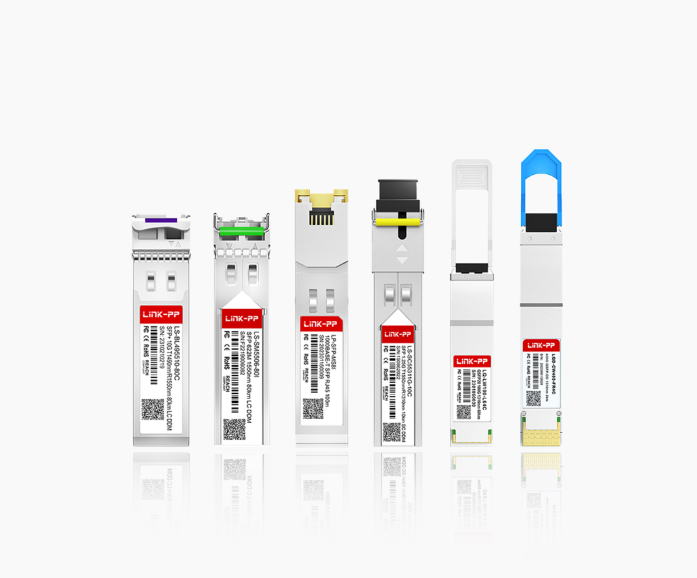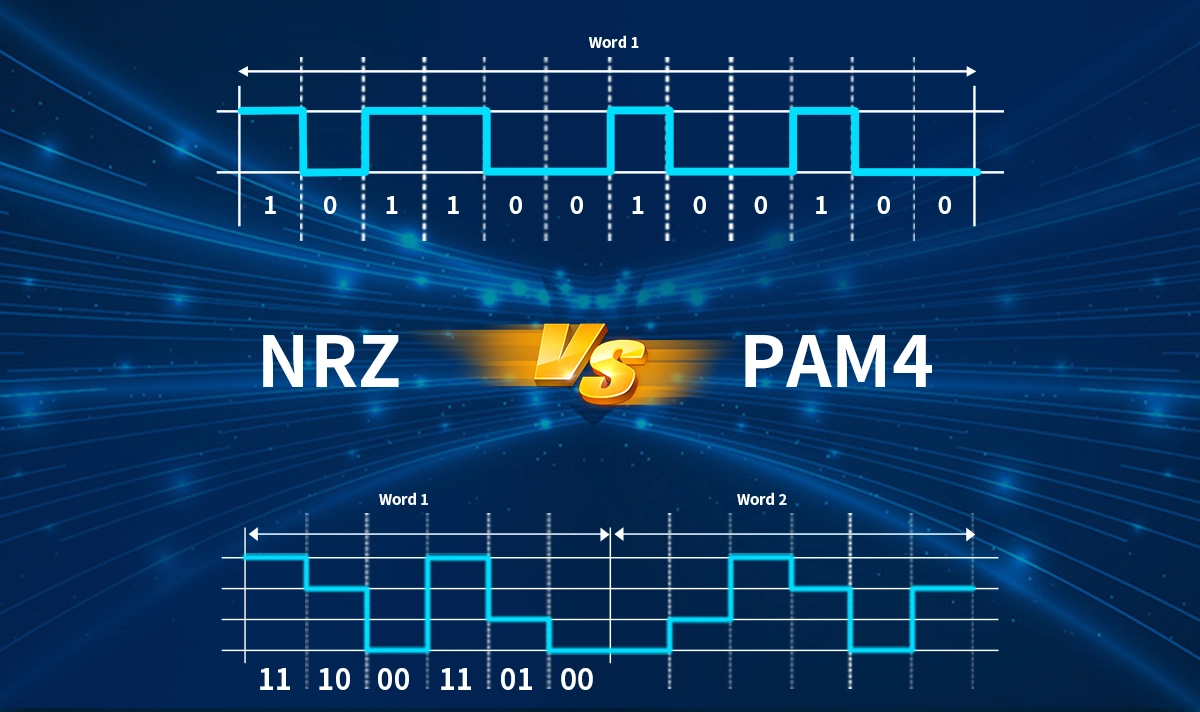
➤ Key Differences Between PAM4 and NRZ
Explore PAM4 and NRZ modulation differences for modern networks.
Feature | NRZ (Non-Return to Zero) | PAM4 (Pulse Amplitude Modulation 4-level) |
|---|---|---|
Levels | 2 (e.g., Low=0, High=1) | 4 (e.g., L0=00, L1=01, L2=10, L3=11) |
Bits per Symbol | 1 | 2 |
Data Rate Efficiency | Lower (Data Rate = Symbol Rate) | Higher (Data Rate = 2 x Symbol Rate) |
Symbol Rate (Baud) for same Data Rate | Higher (e.g., 56 GBaud for 56Gbps) | Lower (e.g., 28 GBaud for 56Gbps) |
Susceptibility to Noise | Lower (Larger eye opening, higher SNR margin) | Higher (Smaller eye opening, lower SNR margin) |
Implementation Complexity | Lower | Higher (Requires DSP, strong FEC) |
Typical Power per Bit | Lower (Mature technology) | Higher (Complexity overhead) |
Dominant Data Rates | ≤ 25Gbps per lane (e.g., 10G, 25G SFP+) | ≥ 50Gbps per lane (e.g., 100G, 200G, 400G, 800G) |
Key Applications | Legacy 10G/25G, Short-reach interfaces | High-speed data centers (100G+), HPC, AI/ML clusters, 5G fronthaul/midhaul |
You can see networks changing fast as data centers need more speed. The PAM4 vs NRZ debate is important because PAM4 sends two bits for each symbol, but NRZ sends only one. This change makes bandwidth work twice as well for new ethernet, and it does not use more channel bandwidth. In data centers, PAM4 vs NRZ matters because PAM4 has four amplitude levels, but NRZ has only two. When networks get faster, PAM4 modulation helps send data quicker and better.
➤ Key Takeaways
PAM4 sends two bits in each symbol. It uses four voltage levels. This makes data move twice as fast as NRZ. NRZ only sends one bit per symbol. It uses just two voltage levels.
NRZ has stronger signals. It has less noise and uses less power. This makes it easier to use. It works better for long distances or slower networks.
PAM4 works best for fast, short links. It is used in 400G Ethernet and data centers. It needs special error correction. It also uses more power.
You pick PAM4 or NRZ based on your network. Think about speed, distance, cost, and future needs.
Using both PAM4 and NRZ in a network can help. It balances speed and reliability. It also helps get ready for future upgrades.
➤ Basics of Modulation
What is NRZ?
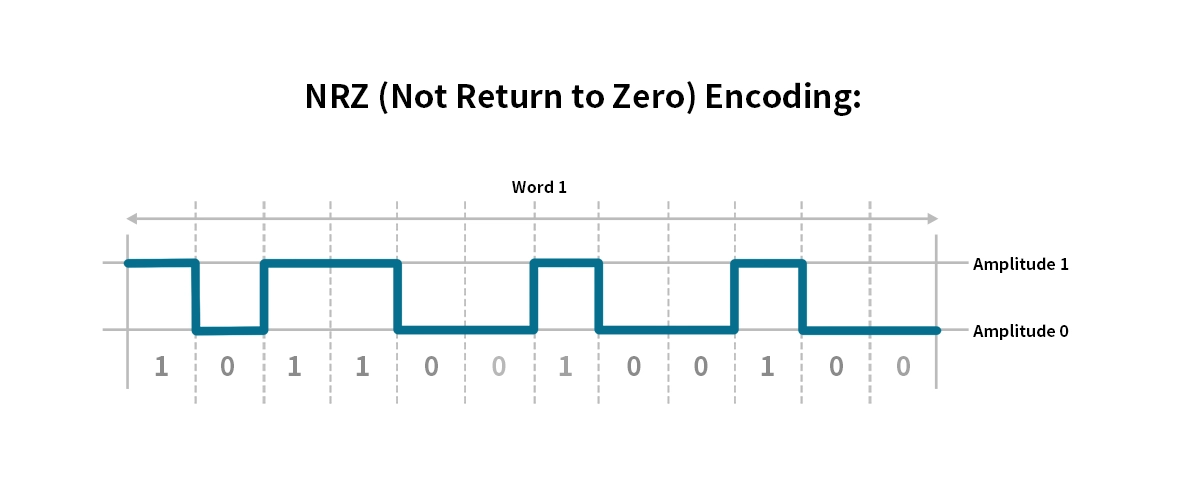
NRZ is a simple way to send signals. It stands for non-return to zero. This method uses two voltages to show binary data. A '1' is a high voltage. A '0' is a low voltage. The signal does not go back to zero between bits. This keeps things easy to understand. In unipolar NRZ, '1' is a positive voltage and '0' is zero volts. In bipolar NRZ, the signal switches from positive to negative voltage.
Two Levels: It uses two distinct voltage (electrical) or light intensity (optical) levels.
A high level typically represents a logical '1'.
A low level represents a logical '0'.
Simple Operation: Each symbol period transmits either a '1' or a '0'. The signal doesn't return to a neutral "zero" state between bits with the same value (hence "Non-Return to Zero").
Advantages: Simplicity makes NRZ robust and relatively easy to implement with lower power consumption and less complex signal processing requirements. It offers excellent signal integrity at lower data rates.
Limitations: Its efficiency hits a wall. To double the data rate, you need to double the symbol rate (baud rate). Doubling the baud rate significantly increases signal degradation due to channel loss, noise, and crosstalk, making it impractical beyond ~25-28 Gigabaud per lane for mainstream applications.
What is PAM4?
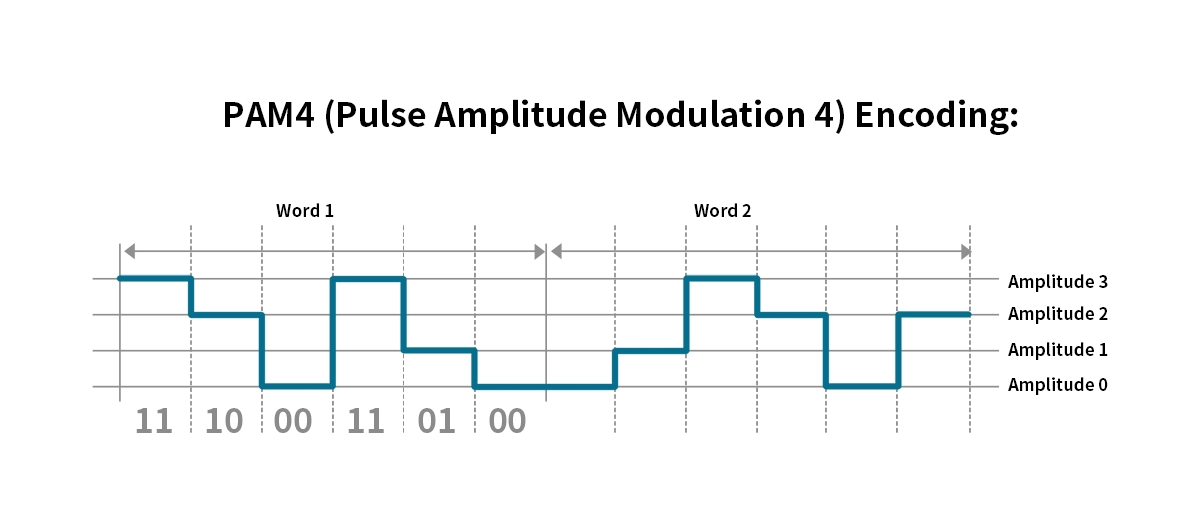
PAM4 is a way to send more data at once. It stands for pulse amplitude modulation 4-level. It uses four voltage levels to show two bits in each symbol. This lets you send twice as much data as NRZ in the same time. PAM4 is a type of pulse-amplitude modulation that makes bandwidth use better. Each symbol in PAM4 stands for a pair of bits, like 00, 01, 10, or 11. This helps you send more data without needing more channel bandwidth.
Four Levels: PAM4 uses four distinct voltage or light intensity levels.
Two Bits per Symbol: Each symbol period now carries two bits of information:
Level 0: '00'
Level 1: '01'
Level 2: '10'
Level 3: '11'
Doubling Efficiency: By transmitting two bits per symbol, PAM4 achieves double the data rate of NRZ at the same baud rate. A 28 Gigabaud PAM4 signal delivers 56 Gigabits per second (Gbps) per lane, whereas NRZ would only deliver 28Gbps at that baud rate.
Challenges: This efficiency comes at a cost:
Reduced Signal-to-Noise Ratio (SNR): The four levels are closer together than NRZ's two levels. This makes the signal much more susceptible to noise, distortion, and interference. A smaller noise margin can flip a level and cause errors.
Increased Complexity: PAM4 requires significantly more sophisticated transceiver designs, including powerful Forward Error Correction (FEC), advanced DSP (Digital Signal Processing), and precise linearity in drivers and receivers. This generally translates to higher power consumption per bit compared to mature NRZ designs.
Note: PAM4 has more voltage levels, so the space between them is smaller. This makes PAM4 signals easier to mess up with noise than NRZ.
Why Modulation Matters
Modulation is needed to send digital data over wires or fiber. It changes the signal so it can travel far with less trouble. For fast data, outside modulation tools, like a Mach-Zehnder modulator, help keep the signal strong. Pulse amplitude modulation and other ways to change signals help you pick the best mix of speed, efficiency, and reliability.
➤ Eye Diagrams and Signal Integrity
NRZ Eye Diagram
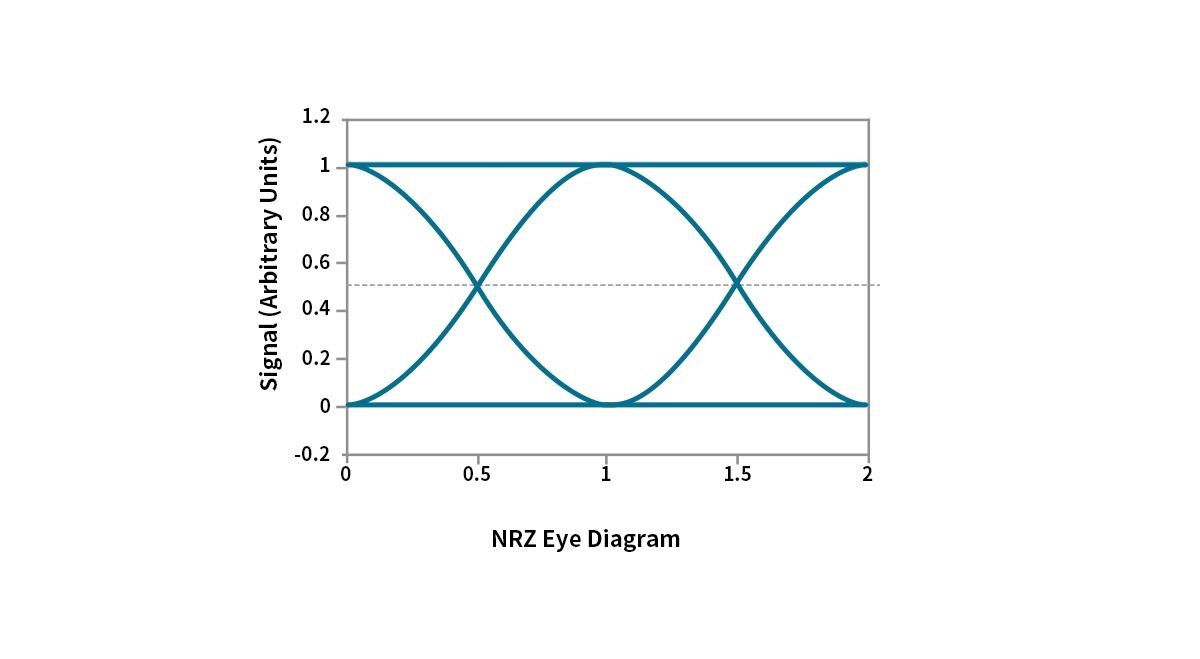
When you look at an NRZ eye diagram, you see how the signal works. There are two main voltage levels, one for 0 and one for 1. This makes a big, open "eye" shape in the diagram. The open eye means the signal is strong and not easily messed up by noise.
You can see two clear voltage levels, so 0 and 1 are easy to tell apart.
The wide eye opening means the signal is strong and not much gets changed.
Smooth changes between levels help you keep track of timing and make fewer mistakes.
The tall part of the eye shows how much noise the signal can handle.
The wide part shows if there is timing jitter or intersymbol interference.
A bigger eye means fewer mistakes and easier timing.
If the eye gets smaller, noise or problems are making the signal worse.
NRZ eye diagrams are simple and not as tricky as PAM4. This makes NRZ stronger and easier to use when you want your data to be safe.
PAM4 Eye Diagram
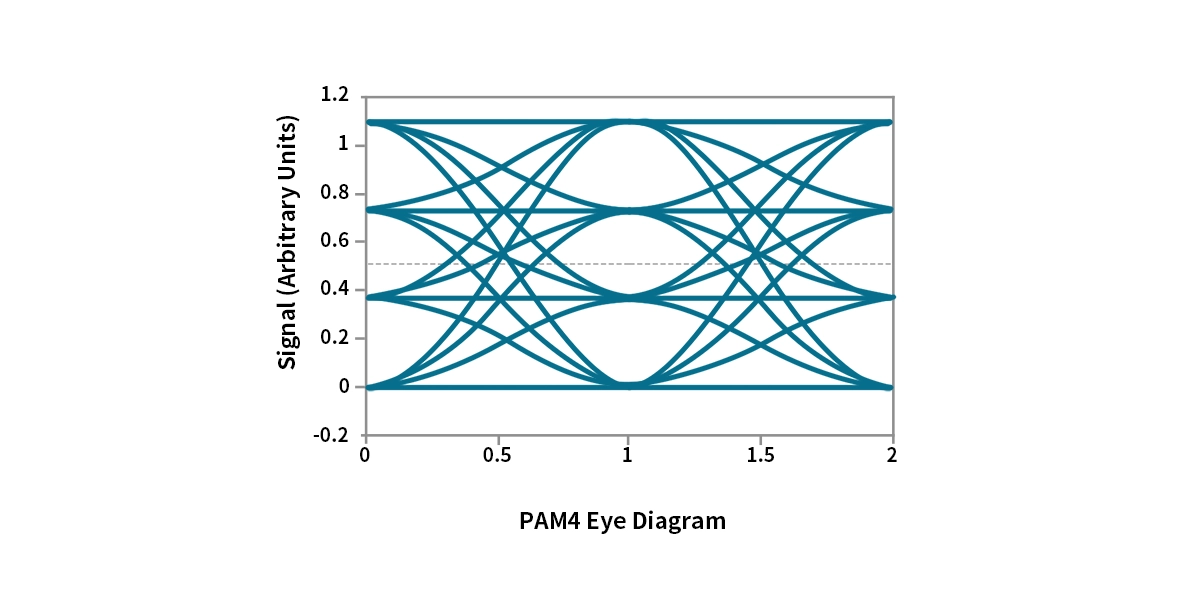
The PAM4 eye diagram is not the same as the NRZ one. You see four different levels instead of just two. Each level stands for a different two-bit pair. The levels are close together, so the eye openings are smaller and stacked up. This makes the PAM4 signal easier to mess up with noise.
You can see that the smaller eye openings in PAM4 mean it cannot handle as much noise. It is harder to keep track of timing because the eyes are not as big. The stacked eyes can mix together if there is too much noise, which can cause more mistakes. You need special tools to fix errors and keep the PAM4 signal clear.
When you look at both, NRZ gives you a cleaner and bigger eye diagram. PAM4 lets you send more data, but you have to watch the signal and use extra help to keep mistakes low.
➤ Where Do They Shine? Application Focus
NRZ: Still reigns supreme where simplicity, power efficiency, and cost-effectiveness are paramount for data rates ≤ 25Gbps per lane. Think 10 Gigabit Ethernet (10GbE), 25 Gigabit Ethernet (25GbE) in server connections, and legacy systems. Many optical transceiver types like SFP+ (10G/25G) and QSFP28 (4x25G=100G) utilize NRZ.
PAM4: The undisputed champion for high-density, high-bandwidth applications demanding 50Gbps per lane and beyond. It's the backbone of:
100 Gigabit Ethernet (100GbE - using 2 lanes of 50G PAM4)
200 Gigabit Ethernet (200GbE - 4x50G PAM4)
400 Gigabit Ethernet (400GbE - 8x50G PAM4 or 4x100G PAM4)
800 Gigabit Ethernet (800GbE - 8x100G PAM4)
AI/ML clusters and High-Performance Computing (HPC) interconnects.
➤ Choosing Between PAM4 and NRZ
When you pick between PAM4 and NRZ, you should think about a few big things. Each one is good for different jobs. You want to choose the one that fits your needs for speed, price, and how your network might grow.
Here are some main things to think about:
Speed Needs: If your network needs to be super fast, like 400G or more, PAM4 can send twice as much data in the same space. NRZ is better for slower networks that do not need as much speed.
Signal Quality: NRZ has two voltage levels, so it is stronger against noise. You get fewer mistakes and a clearer signal. PAM4 has four levels, so noise can mess up the signal more. You will need special tools to fix errors with PAM4.
Hardware and Cost: NRZ parts are simple and cost less money. PAM4 needs more parts and special chips, so it costs more. If you want to save money and keep things easy, NRZ is a smart pick.
Power Use: NRZ uses less energy because it does not need extra work. PAM4 uses more energy to keep the signal clear.
Distance: NRZ works better if you need to send data far. PAM4 is best for short links, like inside a data center.
Future Growth: If you want to make your network faster later, PAM4 can handle higher speeds and new standards.
You can see these differences in this table:
Factor | NRZ Characteristics | PAM4 Characteristics |
|---|---|---|
Data Rate | 1 bit per clock cycle | 2 bits per clock cycle (double bandwidth) |
Signal-to-Noise Ratio | Higher, less noise sensitive | Lower, more noise sensitive |
Lower | Higher, needs error correction | |
Hardware Complexity | Simple, cost-effective | Complex, higher cost |
Power Consumption | Lower | Higher |
Transmission Distance | Longer | Shorter |
Scalability | Good for current needs | Ready for future upgrades |
💡 Tip: Pick NRZ if you want something simple and cheap for slower speeds or longer links. Choose PAM4 if you need the fastest speeds and want your network to grow in the future.
➤ LINK-PP Optical Transceivers: Delivering Performance with NRZ and PAM4

Choosing the right optical transceiver is critical for network performance. LINK-PP offers a comprehensive portfolio supporting both NRZ and advanced PAM4 modulation:
For NRZ Applications: Reliable and cost-effective optical transceiver solutions like our LINK-PP SFP-25G-SR LS-MM8525-S1C or LINK-PP QSFP28-100G-SR4 LQ-M85100-SR4C deliver robust 25G per lane NRZ performance for 10G, 25G, and 100G (4x25G) deployments.
For High-Speed PAM4 Applications: Our cutting-edge PAM4 optical transceiver modules are engineered to overcome the signal integrity challenges:
LINK-PP LQD-CW400-DR4C: Ideal for 400G short-reach single mode fiber using 4x100G PAM4.
These LINK-PP optical transceiver modules incorporate sophisticated DSP and strong FEC to ensure reliable, high-performance connectivity in demanding PAM4 environments, making them essential for next-generation data center and AI infrastructure.
➤ The Future is Multi-Level
While NRZ remains vital, the trajectory for high-speed networking is firmly towards PAM4 and potentially even more complex modulation schemes (like PAM8 or PAM16) as we push towards 1.6 Terabit Ethernet and beyond. PAM4's ability to double the data rate without doubling the baud rate is essential for leveraging existing fiber infrastructure. Successfully deploying PAM4 hinges on high-quality components and sophisticated optical transceiver design – exactly where innovators like LINK-PP excel.
Ready to Optimize Your High-Speed Network?
Understanding NRZ vs. PAM4 is fundamental for designing and managing modern, high-bandwidth networks. Whether you're upgrading legacy infrastructure or deploying cutting-edge AI clusters, choosing the correct modulation and the right optical transceiver partner is crucial.
FAQ
What makes PAM4 better than NRZ for high-speed data?
You get double the data rate with PAM4 because it sends two bits per symbol. NRZ only sends one bit per symbol. PAM4 works best when you need more speed in your network.
Does PAM4 always use more power than NRZ?
PAM4 usually needs more power. You use extra circuits for error correction and signal processing. NRZ uses less power because it has a simpler design.
Which is easier to install, PAM4 or NRZ?
You find NRZ easier to install. It uses simple hardware and needs less tuning. PAM4 requires more setup and careful design to handle noise and errors.
Can you use PAM4 and NRZ in the same network?
Yes, you can mix both. You use NRZ for older or longer links. You use PAM4 for new, high-speed connections. This helps you upgrade your network step by step.
Which is better for long distances, PAM4 or NRZ?
NRZ works better for long distances. It handles noise well and keeps the signal clear. PAM4 fits short to medium links where you need more speed.




